Our winter wasn’t as cold as last years, but we had more snow which set us up for serious flooding if the right conditions were met. Winter did not want to leave and we were still having very cold temperatures into the month of May. Usually we experience a few days of melting at the end of April or beginning of May, not this year. On the first of May the night time temperature dropped to –20F/ –29C and it wasn’t until after the middle of May before we had temperatures getting above freezing. On the 1st of May I took the monthly ice thickness in the Colville River by our house and even with 17 inches/43cm of snow on top of the ice it was still 68 inches/172.7cm thick.
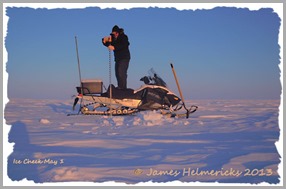 Standing on snow machine to start the drilling operation to get through the thick ice.
Standing on snow machine to start the drilling operation to get through the thick ice.
The early arriving Greater White-fronted Geese had a rough two weeks before there was much melting providing water and bare ground for feeding. Our Snow Buntings were three weeks later than the yearly average with the first male showing up at the feeder on May 6th.
Male Snow Buntings waiting out a breezy snow squall.
A group of Black Brant with a pair of Snow Geese feeding in a small patch of melted out tundra before breakup.
When the weather finally turned warm at the end of May it stayed warm, not even freezing at night so the spring runoff was rapid and this led to our second worst flood in the past two decades. We live on a island in the Colville Delta and over 85% of the island was covered in water. Several of the waterfowl nesting areas were flooded with several feet of water and many of the early nesters lost their nests.
Brant flying over a white landscape.
River starting to flood its banks with a small group of King eiders resting on a small pan of river ice.
Local breeding Brant flocking up on some of the last high ground during this years flood.
View showing water around some of the buildings and flooded runway in the center of the photo.
A flock of King Eiders in the edge of the flooded lake by our house.
Fortunately most were just starting and were able to continue once the water levels receded, although many of the clutch were smaller than in a normal year.
A female Brant starting her second attempt to lay eggs this spring. She now has two eggs and is starting to add down from her breast to help insulate the eggs while incubating. She also covers the eggs with the down when she leaves the nest to go bath and feed for short periods several times a day. The down will keep the eggs warm for several hours.
I will end with a photo showing our island and lake when it is dry and green.

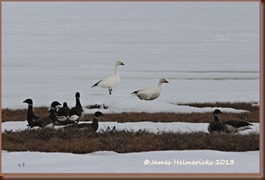
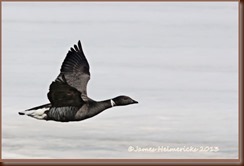
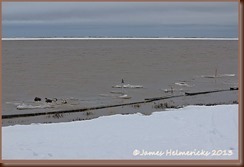
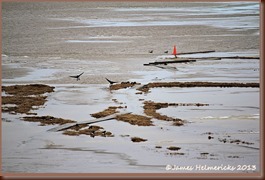
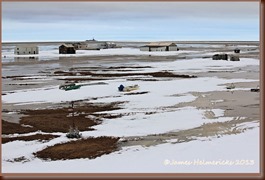
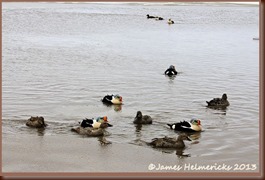
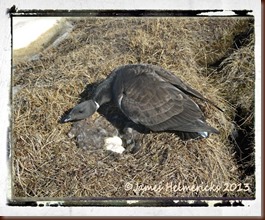
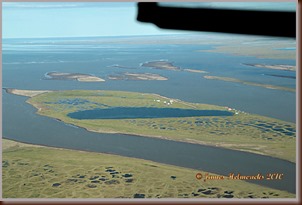
No comments:
Post a Comment